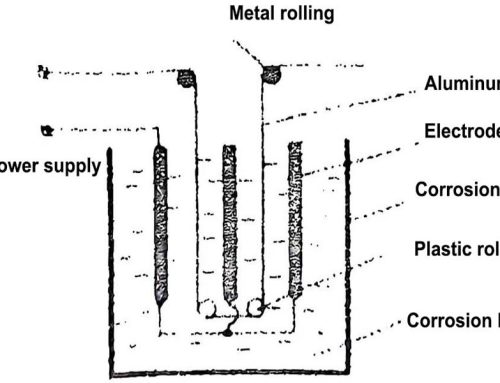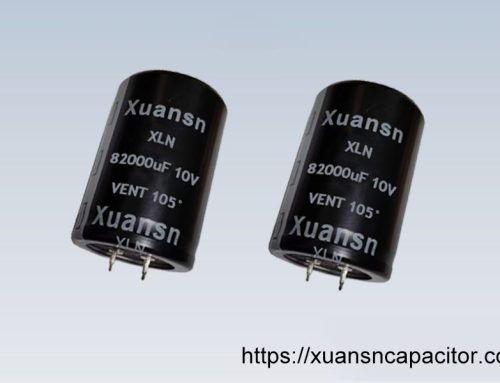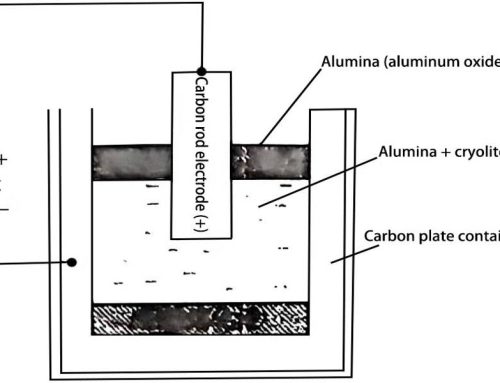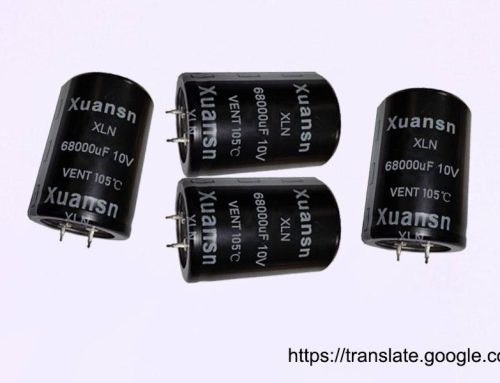1 Capacitor aluminum foil Classification with high purity aluminum foil and aluminum alloy foil
In the aluminum electrolytic capacitor industry, the so-called capacitor aluminum foil classification usually includes high purity aluminum foil and low purity aluminum foil, among which high purity aluminum foil refers to aluminum foil with an aluminum purity of more than 99.9%. Tables 1 and 2 list the impurities in high purity aluminum foil in some countries. It is not difficult to see from the table that due to different manufacturing methods, the types and amounts of impurities in different countries are different, which has a great impact on corrosion effects and performance.
Table 1 Chemical composition of domestic high purity aluminum
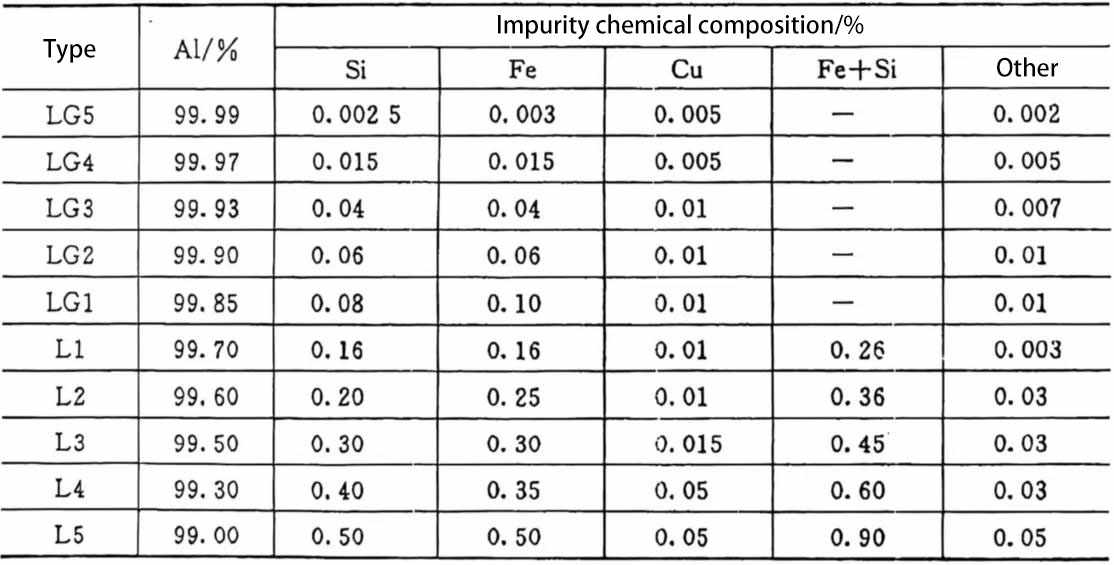
Table 2 Chemical composition of aluminum foil for foreign electrolytic capacitors
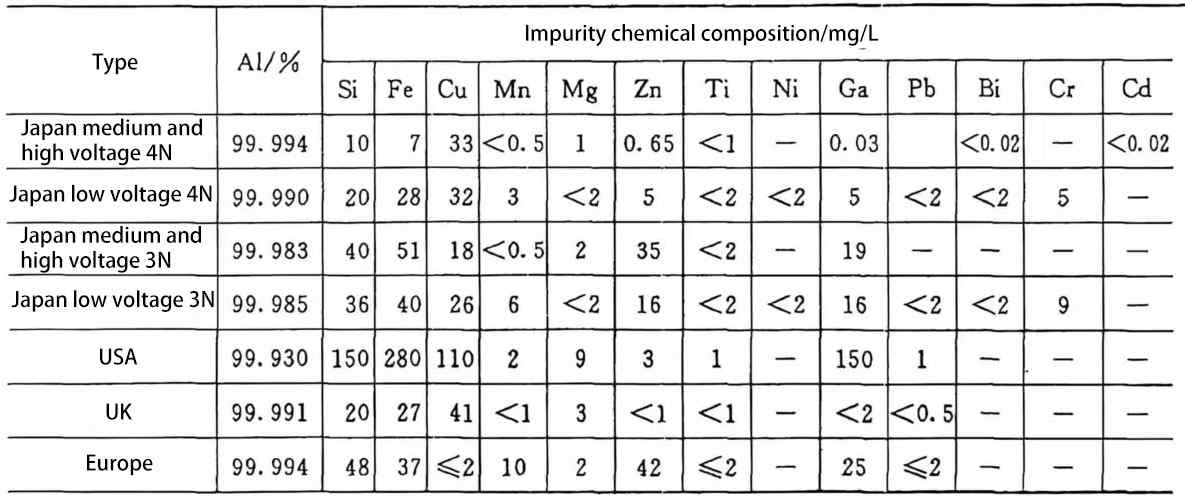
As part of the capacitor aluminum foil classification, aluminum foil for capacitors has certain requirements for mechanical strength, and the hardness of aluminum foil used by different manufacturers is different due to different manufacturing methods and uses. This is often adjusted through different heat treatment processes. Heat treatment can eliminate the internal stress of aluminum foil and improve lattice defects. Currently, aluminum foil is classified into four types according to hardness:
(1) Hard foil After rolling, aluminum foil is not heat treated. Its crystal structure is a collection of slender crystal structures along the rolling direction. Its tensile strength is almost equal in both the rolling direction and the vertical direction, and shows a maximum value. Aluminum foil with a thickness of 15~30μm is almost all hard foil.
(2) Semi-hard foil After rolling, the aluminum foil is annealed to reduce its hardness by half. Its crystal structure is exactly the same as that of hard foil. Due to its slight softness, it can often replace thick hard foil.
(3) Soft aluminum foil Annealed at a temperature of 300~400℃, it has moderate hardness and toughness, and is widely used in low-pressure corrosion foil.
(4) Ultra-soft aluminum foil is generally annealed at a high temperature of 550~600℃. Aluminum foil is very soft and has a low tensile strength. It is used in high-pressure special corrosion foil.
Aluminum foil with a purity of less than 99.9% is generally called low-purity aluminum foil. It is used as cathode foil, and its purity requirement is not as high as that of anode foil. The basic requirements for cathode foil are low price, good corrosion effect, high mechanical strength and softness, not corroded by the working electrolyte, and a sufficiently large cathode capacity with stable performance. Generally speaking, almost all cathode foils with a thickness of 15~30μm use hard foils, while cathode foils above 30μm use semi-hard aluminum foil or soft aluminum foil.
Recently, alloy foils have been developed. In order to improve certain characteristics, some impurities such as Mn, Fe, Cu, Mg, Zn, etc. are added, and the most added are Mn and Cu. For example, adding Cu makes it easier to form uniform and fine pits when the foil is corroded, and the specific volume C is increased: Fe has little effect on the specific volume C of the foil, while the pitting depth and corrosion weight loss of the alloy foil will increase with the increase of the Fe/Mn ratio. Figure 1 shows the effect of Cu and Fe content in AI-Mn alloy foil on the specific volume of the alloy foil. Table 3 lists the chemical composition of low-purity aluminum and alloys. The capacitor aluminum foil classification plays an important role in this process.
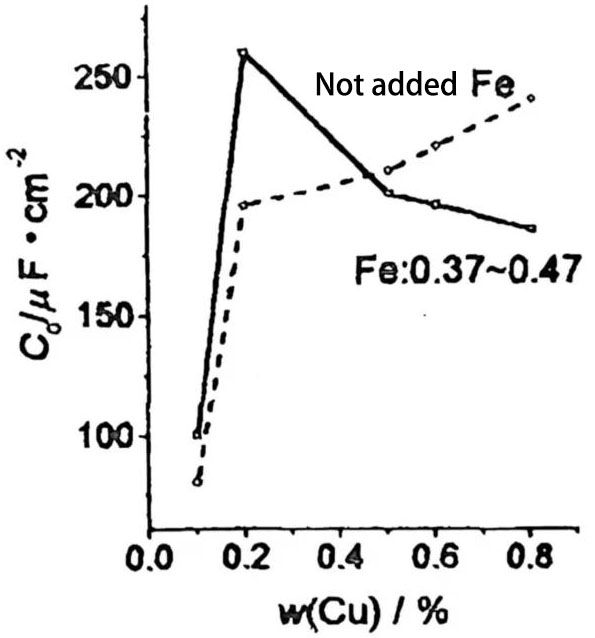
Figure 1 Effect of Cu and Fe content in AI-Mn alloy foil on specific capacitance
Table 3 Chemical composition of low-purity aluminum foil and alloy foil

2 Aluminum material processing technology
The original foil is processed from refined aluminum ingots, and the processing process is briefly as follows:
(1)Casting:The molten aluminum melt is rolled into an ingot for a roller mill by continuous casting. The size of the aluminum ingot is generally about 500~1000mm wide, 1200~1500mm long, 270~290mm thick, and weighs about 1.2 tons.
(2)Homogenization treatment casting:Keeping the cast ingot at a high temperature close to the melting point for 20~30 hours is called homogenization treatment. It makes the impurities evenly distributed in the ingot, eliminates the deformation in the casting, and improves the requirements for material uniformity in the classification of capacitor aluminum foil.
(3)Surface cutting:The uneven surface of the ingot and the existing oxide layer are cut off by about 5~10mm. Because the residual impurities will be concentrated on the surface, the surface is cut off to improve the purity.
(4)Hot rolling After:the aluminum ingot is heated at about 500℃, it is hot-rolled to a thickness of 3~5mm by the rolling mill for multiple times and wound into foil. During rolling, the casting structure is destroyed and metal crystals are recrystallized at the same time. During hot rolling, the crystal grain size of high-purity aluminum is about 0.5mm.
(5)Cold rolling:The hot-rolled coil is cooled to about 80℃ and cold-rolled to a thickness of 0.5~0.6mm, and wound into a coil. This foil is called raw foil.
(6)Finishing rolled foil:The cold-rolled raw foil is rolled continuously and finished to the required thickness, the thinnest of which is 5μm.
(7)Clean winding After:the rolling process is completed, it is cleaned to remove oil and dirt and wound into a coil.
(8)Annealing: After cold rolling, the hardness of the foil increases and it is inconvenient to use. In order to eliminate the internal stress of the box and turn the hard foil into semi-hard or soft foil, it must be annealed under inert gas or vacuum.
(9)Foil cutting :Remove the foil edge, cut into the required width, and roll it into a roll, package it for use.
(10)Inspection and storage:The finished aluminum foil is inspected for quality and stored after passing the inspection for the production of different types of aluminum foil products in the capacitor aluminum foil classification.

